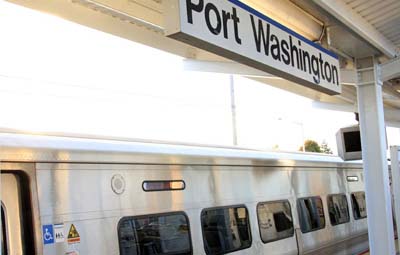The Long Island Rail Road reported for January its worst monthly on-time performance in more than two decades, prompting LIRR officials to outline a performance improvement plan on Tuesday calling for getting new equipment, building on current tactics and boosting communication with customers.
During the month 83.9 percent of trains arrived “on time,” meaning within six minutes of their scheduled time, according to the LIRR’s “Train Talk” newsletter. Only three of four peak trains were considered “on time.”
Overall on-time performance was down 8.5 points from the previous January, when 92.4 percent of trains arrived on time, and was 13 points lower than January 2010, when 96.9 percent of trains were on time.
This is also the worst on-time performance rating since January 1996, when a blizzard crippled transportation across the metropolitan area. In that month 73.5 percent of trains were on time.
LIRR President Patrick Nowakowski said the plan features more de-icing machines, using new technology like rail switch covers to preserve heat, and using M9 trains provided for in the current capital program, as opposed to the current M3s. It also calls for the expanded use of current tactics like brush cutting, rail cleaning and traction gel, as well as more frequent rail inspections and rail grinding to repair damaged wheels and tracks.
In addition, Nowakowski noted the need to accelerate Superstorm Sandy-related enhancement programs, strategically placing crews in the right places and have “better information sharing” with customers.
“Obviously, the service that we provided to customers was not what they expect, it’s not what they deserve, and certainly not what we try to put out there for them,” Nowakowski said at the Tuesday meeting.
Nowakowski had previously attributed the series of delays in December and early January to slippery rails from leaf residue, cold weather putting rails, equipment and signal switches under “tremendous pressure,” and the January “bomb cyclone.”
Intense snow drifts and the fineness of the snow also complicated matters, Nowakowski said, as did damage to the railroad’s powerful snowplow.
The Port Washington branch, which includes stops in Great Neck, Manhasset, Plandome and Port Washington, fared better than most lines, reporting an 87.7 percent overall on-time rating as against 91.4 percent in January 2017.
It also posted the best morning peak arrival time, with 81 percent of trains being on time, and the third highest off-peak rating at 91 percent.
The Oyster Bay branch, which runs through Roslyn, Albertson and East Williston, posted an overall on-time rating of 84.7 percent, but the second worst evening peak on-time rate at 68.3 percent. Ninety-three percent of trains were on time in January 2017.
Port Jefferson’s branch, which includes stops in Mineola, New Hyde Park and Floral Park, saw its on-time rating drop nearly nine points from 92.9 percent in January 2017 to 83 percent. Around three-quarters of peak trains were on time.
Overall, the Greenport/Ronkonkoma branch had the worst on-time rating, with 78.9 percent of its trains reported as on time, including 67.6 percent of its AM peak trains, 76.2 percent of its PM peak trains and 82.8 percent of its off-peak trains.
January’s problems follow MTA Chairman Joe Lhota promise that improved service seen during the “summer of hell” repairs, due in part to an extensive mitigation plan and improved communication, would become the “new normal” for commuters.
Editor’s note: This article was updated to include information about the LIRR’s planned performance plan to address delays.



